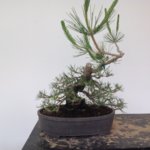JoeR
Masterpiece
While I’ve worked with JBP seedlings and other species of pines before, I’ve never actually had a good project JBP. This will be my first real venture into the species, certainly looking forward to learning. I acquired this at the Winter Silhouette show from the Valavanis’ sales table; of which Mrs. Valavanis was manning at the time, who is such an outstanding individual, I really enjoyed talking with her. More than willing to share her wealth of knowledge.
I don’t know it’s age, but it’s just starting to show the beginnings of nice bark already so I’ll take that as a very good sign. As it sits, it has at least two potential fronts; pictured though is only one of them, the other side is too dense to show off. Maybe I’ll have some time to sit down and clean it out for a few pictures later this week.
As far as a plan for development, I’ve not had the tree long enough to create a solid plan yet, although I do have some ideas. Any suggestions are always welcome. I’ll be shuffling through the JBP link thread in the meantime.
I don’t know it’s age, but it’s just starting to show the beginnings of nice bark already so I’ll take that as a very good sign. As it sits, it has at least two potential fronts; pictured though is only one of them, the other side is too dense to show off. Maybe I’ll have some time to sit down and clean it out for a few pictures later this week.
As far as a plan for development, I’ve not had the tree long enough to create a solid plan yet, although I do have some ideas. Any suggestions are always welcome. I’ll be shuffling through the JBP link thread in the meantime.
Attachments
-
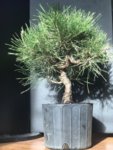 C796B959-C457-4AB4-BAC9-B16A0DA69292.jpeg243.4 KB · Views: 231
C796B959-C457-4AB4-BAC9-B16A0DA69292.jpeg243.4 KB · Views: 231 -
 C56A38B2-39C1-47A6-B57E-1D8AA44C7E28.jpeg239.6 KB · Views: 202
C56A38B2-39C1-47A6-B57E-1D8AA44C7E28.jpeg239.6 KB · Views: 202 -
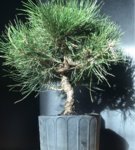 0AE9B2DD-4961-4490-A3F2-B3343D4B7DC5.jpeg321.4 KB · Views: 183
0AE9B2DD-4961-4490-A3F2-B3343D4B7DC5.jpeg321.4 KB · Views: 183 -
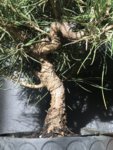 94144F64-76A1-4276-8EC8-A77AC7E35A10.jpeg278.6 KB · Views: 177
94144F64-76A1-4276-8EC8-A77AC7E35A10.jpeg278.6 KB · Views: 177 -
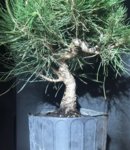 697FDF9A-A21B-42DD-8583-8ED5262CCDA4.jpeg309.2 KB · Views: 164
697FDF9A-A21B-42DD-8583-8ED5262CCDA4.jpeg309.2 KB · Views: 164 -
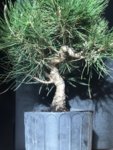 E5470B8F-598E-4607-8760-3C40A8BF0AE9.jpeg282.7 KB · Views: 147
E5470B8F-598E-4607-8760-3C40A8BF0AE9.jpeg282.7 KB · Views: 147 -
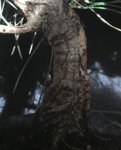 AA908DB4-1934-42AE-95FD-FD4ABC83752F.jpeg171.5 KB · Views: 148
AA908DB4-1934-42AE-95FD-FD4ABC83752F.jpeg171.5 KB · Views: 148 -
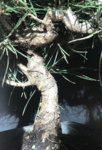 C72F403A-1DA9-4048-9487-31D1C3508F04.jpeg200.2 KB · Views: 249
C72F403A-1DA9-4048-9487-31D1C3508F04.jpeg200.2 KB · Views: 249

